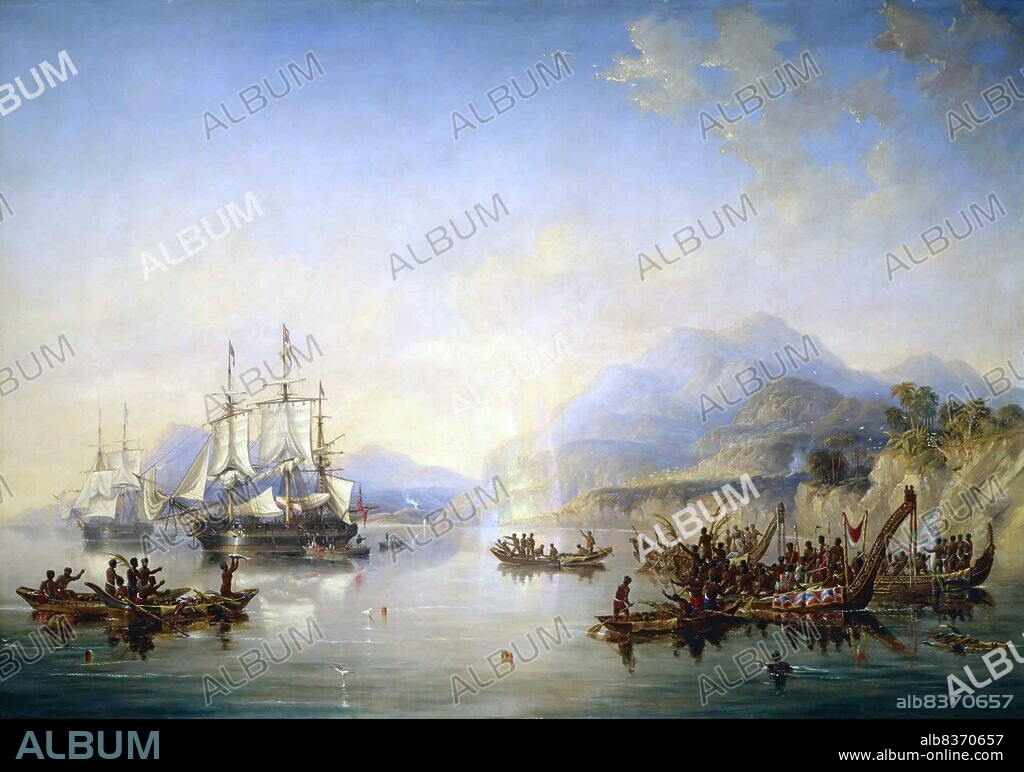alb8370657
UK / New Zealand: 'Erebus and Terror in New Zealand, August 1841', Ross Expedition, oil on canvas, John Wilson Carmichael (1800-1868), c. 1847

|
Ajouter à une autre Lightbox |
|
Ajouter à une autre Lightbox |



Avez-vous déjà un compte? S'identifier
Vous n'avez pas de compte ? S'inscrire
Acheter cette image.
Sélectionnez l'usage:

Titre:
UK / New Zealand: 'Erebus and Terror in New Zealand, August 1841', Ross Expedition, oil on canvas, John Wilson Carmichael (1800-1868), c. 1847
Légende:
Voir la traduction automatique
The Ross expedition was a voyage of scientific exploration of the Antarctic in 1839 to 1843, led by James Clark Ross, with two unusually strong warships, HMS Erebus and HMS Terror. It explored what is now called the Ross Sea and discovered the Ross Ice Shelf. On the expedition, Ross discovered the Transantarctic Mountains and the volcanoes Erebus and Terror, named after his ships. The young botanist Joseph Dalton Hooker made his name on the expedition.
. The expedition inferred the position of the South Magnetic Pole, and made substantial observations of the zoology and botany of the region, resulting in a monograph on the zoology, and a series of four detailed monographs by Hooker on the botany, collectively called Flora Antartica and published in parts between 1843 and 1859. The expedition was the last major voyage of exploration made wholly under sail.
. The expedition inferred the position of the South Magnetic Pole, and made substantial observations of the zoology and botany of the region, resulting in a monograph on the zoology, and a series of four detailed monographs by Hooker on the botany, collectively called Flora Antartica and published in parts between 1843 and 1859. The expedition was the last major voyage of exploration made wholly under sail.
Crédit:
Album / Universal Images Group / Pictures From History
Autorisations:
Modèle: Non - Propriété: Non
Questions sur les droits?
Questions sur les droits?
Taille de l'image:
4968 x 3486 px | 49.5 MB
Taille d'impression:
42.1 x 29.5 cm | 16.6 x 11.6 in (300 dpi)
Mots clés:
ANGALIS • ANGLAIS • ANGLAISE • ANGLETARRE • ANGLETERE • ANGLETERRE • ART (CATÉGORIE) • ART • ART, PEINTURE • DÉCOUVERTE • EXPLORATION • GRANDE BERTAGNE • GRANDE BRETAGNE • GRANDE-BRETAGNE • INGLATERRA • MARITIME • NAVAL • NAVALE • NOUVELLE ZÉLANDE • NOUVELLE-ZELANDE • PEINTURE • ROYAUME UNI • ROYAUME-UNI • TABLEAU • TABLEAUX • TRANSPORT • XIXE SIÈCLE
 Pinterest
Pinterest Twitter
Twitter Facebook
Facebook Copier le lien
Copier le lien Email
Email
